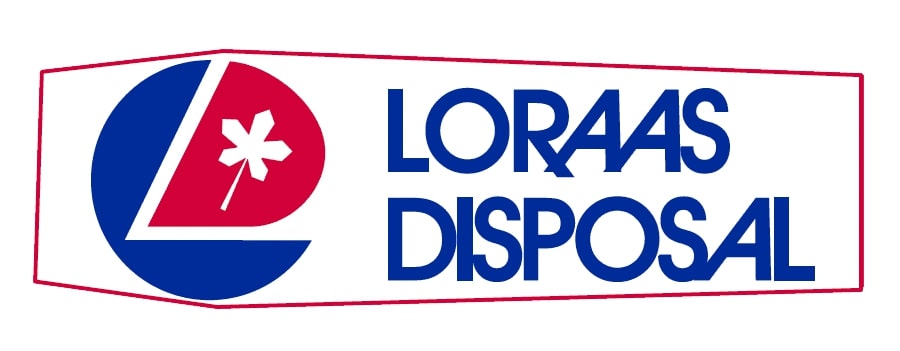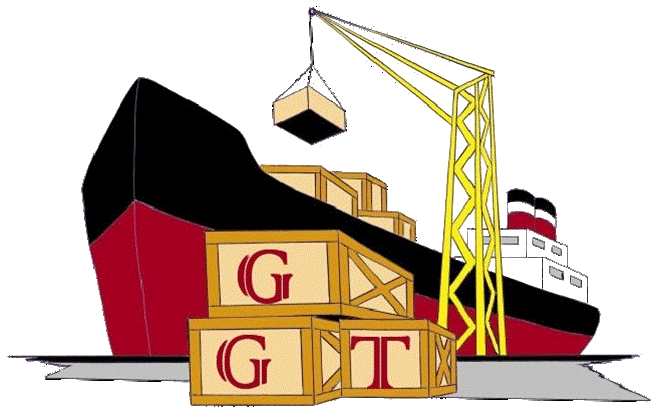1. Background
SEPAK TAKRAW SASKATCHEWAN INC. (STAS) is the non-profit corporation and Provincial Sports Governing Body for the sport of Sepak Takraw in Saskatchewan. Though in name it just received its Incorporation Number 101138669 with Corporations Branch of Saskatchewan Justice on February 18, 2009, the Corporation grew out of the Sepak Takraw Committee of ASIAN SPORT, EDUCATION & CULTURE (ASEC) INTERNATIONAL – a provincial non-profit organization operating since 1997 (incorporation # 291008). With over 200 Saskatchewan schools having Sepak Takraw equipment, and with growing interest in the sport around the province and across the country, the time was right for ASEC International’s Sepak Takraw Committee to become independent of ASEC and form Sepak Takraw Saskatchewan Inc. so that a more focused effort could be made to bring the sport of Sepak Takraw into the mainstream.
2. Definitions
2.1. The “Corporation” means SEPAK TAKRAW SASKATCHEWAN INC. (STAS);
2.2. The “Directors”, “Board” and “Board of Directors” means the directors of the Corporation for the time being;
2.3. The headings used in the bylaws are inserted for reference only and are not to be considered in constructing the terms thereof or to be deemed in any way to clarify, modify, or explain the effect of any such terms;
2.4. All terms contained in the bylaws and which are defined in the Act shall have the meanings given to such terms in the Act;
2.5. “Member” means an Individual Member or a Club Member.
3. Mission
3.1. The Corporation’s mission is to develop awareness, interest, and all levels of participation by ALL in the sport of Sepak Takraw in Saskatchewan through the creation, promotion and advancement of quality programming and services, while also advancing diversity in sports.
3. Objectives
The objectives of the Corporation are:
4.1. To promote and develop Sepak Takraw to be both a recreational and competitive Sport For ALL, and that supports and enhances active living for the betterment of quality of life in Saskatchewan;
4.2. To conduct Sepak Takraw Introductory and Skill Training Clinics, Referee Courses, and Coaching Seminars that would equip interested participants to become knowledgeable and effectively involved in the sport right up to its highest levels if they so choose;
4.3. To facilitate the organizing of school and club Sepak Takraw leagues and tournaments throughout Saskatchewan that would effectively result in zone champions competing in a provincial championship tournament to decide which are the best Sepak Takraw teams and players in the province;
4.4. To prepare and send Saskatchewan’s best Sepak Takraw players/teams to compete in western Canadian, national, and international championships;
4.5. To work directly, and foster a good relationship, with the Sepak Takraw Association of Canada (STAC), the national governing body for the sport.
5. Membership
5.1. The term of membership with the Corporation shall be from January 1 to December 31 of each year.
5.2. The membership of the Corporation is open to any individual, school, club or organization who is committed to its objectives and who is willing to contribute time and effort in support of its work, with the following general benefits:
5.2.1. Members are eligible to gain access to programs, and become partners with the Corporation in the development and delivery of Sepak Takraw activities and programs throughout the province.
5.2.2. Members have an official voice and a “vote” regarding the affairs of the Corporation, and are eligible to serve on the Board of Directors, act as an area representative, work as volunteer/staff or serve on committees.
5.3. Membership fees are set by the Board of Directors and ratified by the members of the Corporation at the Annual General Meeting, and can be subject to change from time to time.
5.4. Membership to the Corporation is offered to INDIVIDUALS and CLUBS, with the following specific benefits:
5.4.1. Individual Members - shall be entitled to all privileges of membership including insurance and the right to vote at meetings of members. They shall also eligible to play in a Saskatchewan sport region, zone, provincial or Canadian regional or national tournament. Individual Membership Fee includes membership to the national governing body, the Sepak Takraw Association of Canada, (STAC), the portion of which the Corporation would then in turn remit to STAC.
5.4.2. Club Members - meaning school, association, recreational/sports group, etc. - shall be entitled to the same rights as Individual Members, but as a club shall not be entitled to have more than one vote, nor have more than one representative eligible to serve as a Director or area representative. Players registered under Club Members only, are eligible to play in their local town/city or school division tournaments, however to go any further in the sport they must become an Individual Member. Players registered under a Club Member only, are covered by the corporation’s insurance and by their own club’s insurance if applicable.
5.5. An individual shall not be nominated to hold office as a Director, or be nominated to participate in a representative team, who does not hold membership in the Corporation.
5.6. Any individual, school, club, organization or group declared by the Board of Directors to be “not in good standing” with the Corporation, or any associated organization, may be refused membership, or have their membership revoked if they are already a member – a decision which would be made by the Board of Directors and take effect immediately upon the decision, but ratified by the members of the Corporation at the next Annual General Meeting of members.
5.7. The Board of Directors may find a member “not in good standing” if they continue to be in breach of the Bylaws, misappropriate equipment or funds, or if they are found to be undermining and/or acting against the Corporation in such a way as to cause damage to its management or reputation.
5.8. The refusal or revocation of membership shall be automatically effective for a term of one calendar year at any one time, but may also be based on specific directives that the Board of Directors may give, which depending on the situation, could be longer than one calendar year.
6. Meetings of Members
6.1. The first Annual General Meeting of members shall be held within 16 months after incorporation, after which every other Annual General Meeting (AGM) shall be targeted to be held in March of each year at a time and place to be fixed by the previous Annual General Meeting or by the Board of Directors.
6.2. The Board of Directors shall be elected at Annual General Meetings.
6.3. The Board of Directors shall have power to call, at any time, a general meeting of the members of the Corporation.
6.4. The Board of Directors shall call a general meeting upon the written request of not less than 25 % of the members. The secretary shall comply with any of the aforementioned requests for a general meeting and make the necessary arrangements.
6.5. The members present shall constitute a quorum at such a general meeting of members that is called.
6.6. All business transacted at a special general meeting of members or at an Annual General Meeting, other than consideration of the Technical Director/Coach’s report, financial statements, auditor’s report, election of directors and re-appointment of an incumbent auditor, is deemed to be “Special Business”.
6.7. No Special Business may be transacted at a meeting of members unless the notice of meeting has stated the nature of the business in sufficient detail to permit members to form a reasoned judgment thereon.
6.8. Notice of the time and place of a meeting of members shall be sent, not less than 15 days or more than 50 days before the meeting, to each member entitled to attend the meeting and to the auditor.
7. Voting
7.1. Each Individual Member or Club Member representative present at a meeting shall have the right to exercise one vote. No individual may exercise more than one vote.
7.2. Members shall vote by a show of hands except where a ballot is requested by at least one member either before or after a vote.
7.3. At all meetings of members of the Corporation the goal is to arrive at consensus decision-making (i.e., decisions that are approved by all the members present). Where consensus cannot be reached, decisions are made by a vote of a simple majority of the members present, unless otherwise specifically provided by stature or by these Bylaws.
7.4. Any two or more members at the meeting may supervise the ballot subject to the approval of the majority of members.
7.5. Non-voting members, or non-members, may be asked to sit out of the meeting, while voting is in progress.
7.6. An eligible member must be present at the meeting to vote (No Proxies).
7.7. A member must be sixteen (16) years of age or older to vote at an Annual General Meeting. If a member is under sixteen (16) years of age, a parent/guardian present may carry the registered member’s vote.
7.8. No By-Law, rule or decision by the Chair shall amend, or restrict, the voting privileges of any member who is in good standing with the Corporation.
7.9. The auditor for the Corporation shall be appointed by the Board of Directors and ratified by the membership at the Annual General Meeting, or by a general meeting of members.
7.10. The Vice-President (VP) Finance/Administration shall present an audited financial statement at the Annual General Meeting, or any meeting called for that purpose.
8. Board of Directors
8.1. The Board of Directors is the policy-making body of the corporation and is established to guide and direct its welfare. Their task as trustees is to manage the Corporation and see that it reaches its full potential in terms of its mission and objectives. They shall carry out their duties with due diligence, integrity and responsibility.
8.2. The General Responsibilities of the Board shall include:
8.2.1. To appoint and assign responsibilities of non-salaried officers as required;
8.2.2. To hire, assign responsibilities, review and release staff as required;
8.2.3. To encourage and support officers and staff and the work of the corporation;
8.2.4. To approve long-range planning;
8.2.5. To approve annual operating and capital budgets;
8.2.6. To authorize non-budgetary expenditures;
8.2.7. To authorize major program direction and focus;
8.2.8. To actively support promotional activities, fund-raising, applying for grants and sponsorship.
8.3. Board members must be 18 years of age, with power under law to contract. They must be Individual Members of the Corporation, with a definite interest and commitment to its purposes and objectives.
8.4. There shall be a minimum of 5 and maximum of 11 Directors, of whom one more than half the actual number of Directors in place constitutes a quorum. Each Director is authorized to exercise one vote.
8.5. Half the Directors shall be elected for a term of 2 years, and half for 3 years, by the members at an Annual General Meeting. Election is by affirmation of a majority of the members present. The applicants for incorporation have been elected as the first Directors of the Corporation, and shall continue until their terms expire at the second or third Annual General Meeting of the Corporation or until they are no longer re-elected, or until they resign.
8.6. After 3 consecutive terms (6 or 9 years), board members are encouraged, but not required, to take a year off before serving again. Resignation is advisable where more than 50% of the meetings in a 12-month period are missed. The board may appoint another Individual Member of the Corporation to fill a Board vacancy until the next Annual General Meeting, at which time elections are held.
8.7. The office of Director shall be automatically vacated if:
8.7.1. A Director resigns by delivering a written resignation to the Secretary of the Corporation;
8.7.2. At a special meeting of members, a resolution is passed by a majority of the members present that he be removed from office;
8.7.3. A Director ceases to be a resident of Saskatchewan;
8.7.4. A Director has the status of bankrupt;
8.7.5. A Director is found to be of unsound mind;
8.7.6. Death occurs.
8.8. If the President resigns, the VP Finance/Administration shall be the first choice to resume the office of President, and at the Annual General Meeting an election would take place for the President’s position.
8.9. Directors hold office until the conclusion of the meeting at which their successors are elected.
8.10. Directors shall serve as such without remuneration (provided that they may be paid reasonable expenses incurred by them in the performance of their duties), unless due to unique circumstances – but falling within budget guidelines – the Board of Directors elect to remunerate an officer(s) for the extraordinary work and time spent on a particular project or program.
9. Powers of the Board of Directors
9.1. The Directors may administer the affairs of the Corporation in all things and make, or cause to be made, any kind of contract, in its name, which the Corporation may lawfully enter into.
9.2. The Directors shall have power to authorize expenditures on behalf of the Corporation and may delegate by resolution to an officer or officers of the Corporation the right to employ and pay salaries to employees.
9.3. The Directors shall have the power to enter into a trust arrangement with a trust company for the purpose of creating a trust fund in which any capital and interest may be made available for the benefit of promoting the interests of the Corporation.
9.4. The Directors shall take such steps as they believe appropriate to enable the Corporation to acquire, accept, solicit or receive legacies, gifts, grants, settlements, bequests, endowments and donations of any kind for the purpose of furthering its objectives.
10. Positions of the Board of Directors:
Ideally, with enough volunteers to take on the positions, the Corporation’s aim would be to have 11 Directors functioning in the positions indicated below. At any time, if circumstances are such that vacant positions on the Board exist, various Directors may oversee a couple of different areas. These are to be the sought-after positions:
10.1. President
10.2. Past President (ex-officio)
10.3. Vice-President Finance/Administration
10.4. Vice-President Communication
10.5. Vice-President Sport for All
10.6. Vice-President High Performance
10.7. Secretary
10.8. Athlete Representative Male
10.9. Athlete Representative Female
10.10. Member at Large (Maximum 2)
11. Duties of the Board of Directors/Officers:
11.1. PRESIDENT
It shall be President’s responsibility to:
11.1.1. Act as Chairperson for all Board Meetings.
11.1.2. Act as ex-officio of all committees established by the Board of which the President is not an official member.
11.1.3. Be the first choice to represent the Board of Directors and/or the Corporation publicly.
11.1.4. As the official representative of the Corporation, he/she must attend, or cause a representative to attend, all meetings required of themselves.
11.1.5. The President is responsible for coordinating the activities of the following:
11.1.5.1 Board of Directors
11.1.5.2 Appointed Committees
11.1.5.3 Salaried Personnel
11.1.6. Give direction to all officers, committee chairpersons and employees and see to it that the Corporation’s policies appropriate to their areas of responsibility are being carried out.
11.1.7. Approve and sign all official documents of the Corporation.
11.1.8. Be responsible for determining appropriate effective structures and processes within the Corporation for its continued well-being.
11.1.9. Assign such duties, as from time to time, become necessary and which are essential to the conduct of the affairs of the Corporation.
11.2. PAST PRESIDENT/EX-OFFICIO
11.2.1. The primary role of the Past President/Ex-officio is to act as a member of the Board of Directors. The responsibilities of this position are to include the following:
11.2.1.1 Chairperson of the nomination committee for Board positions.
11.3. VICE-PRESIDENT FINANCE/ADMINISTRATION
11.3.1. The role and responsibility of the Vice-President Finance/Administration is to monitor, support, assist and liaise with the staff and advise Board of Directors in matters which concern the administrative and financial operation of the Corporation.
11.3.2. As Financial Officer of the Corporation, it shall be both their authority and responsibility to call for an accounting from any Corporation members or employee who exceeds his budgetary responsibility. In such instance, the offender shall answer to the Board of Directors of the Corporation. The Vice-President Finance/Administration shall also make recommendations to the Board of Directors and if requested, to the general membership regarding action to be taken in any such instance.
11.3.3. Specific duties will include:
11.3.3.1 Ensure policies, procedures and By-laws of the Corporation are followed;
11.3.3.2 Ensure that the Policy and Procedure Manual is updated as required and that all By-law changes to be presented and voted on by membership at the Annual General Meeting are prepared;
11.3.3.3 Ensure that all these changes are properly recorded and communicated to the appropriate organizations in i.e., SaskSport, STAC, etc;
11.3.3.4 Participate in all meetings in regards to the preparation of the annual budget;
11.3.3.5 Participate in any follow up reports and present this information to the Board for approval;
11.3.3.6 Ensure that monthly financial statements and budgets for tournaments and projects are prepared and presented to the Board of Directors at their regular meetings;
11.3.3.7 Ensure that the annual audit is carried out in accordance to SaskSport guidelines;
11.3.3.8 If the President is unable to fulfill their duties or resigns, the Vice-President Finance/Administration will assume responsibilities of the President until the Annual General Meeting, at which time a new one can be elected.
11.4. VICE-PRESIDENT COMMUNICATIONS
11.4.1. The Vice-President Communications is primarily responsible for activities and initiatives that contribute to a better understanding of the objectives and policies of the Corporation.
11.4.2. Ensure that a communication plan which will maintain a workable, effective communication structure for the Corporation is developed.
11.4.3. Ensure the promotion of membership services appropriate to each of the membership categories and that these services are widely advertised and delivered.
11.4.4. Ensure the preparation and regular revision of media mailing lists takes place.
11.4.5. Work with the Vice-President High Performance to co-ordinate promotional activities related to the major National Championships the Corporation hosts.
11.4.6. Be responsible for the development of promotional ideas that contribute to the enhancement of the public perception of both Sepak Takraw and the Corporation.
11.4.7. Be responsible for overseeing the publication of the newsletter, web site and any other publications, brochures, posters or articles for Sepak Takraw.
11.5. VICE-PRESIDENT SPORT FOR ALL
11.5.1. The primary role of the Vice-President Sport for All shall be to administer, organize, develop, and direct the Corporation’s “Sport Development Program” along with committee members.
11.5.2. Co-ordinate with the Technical Director/Provincial Coach, the development and implementation of elementary and high school programming.
11.5.3. With the Board of Directors, co-ordinate a Coaching Development Plan through the Saskatchewan Coaches Association and National Coaching Certification Program.
11.5.4. With the Board of Directors, co-ordinate an Officiating Development Plan through the Sepak Takraw Association of Canada (STAC).
11.5.5. Assist the President as liaison to related associations, which affect the technical program.
11.5.6. Oversee the promotion and delivery of Development Programs including Youth Leagues, Elementary School Leagues and High School Leagues.
11.5.7. Ensure that the development of Learning Opportunities is eventually undertaken for various major age groups.
11.5.8. Liaise with the Program Development Committee, volunteers and other professional staff.
11.5.9. Oversee Recreational Programming/Leagues Development.
11.5.10. Submit to the Board of Directors a Sport for All plan for each upcoming year, prior to the completion of each current fiscal year.
11.6. VICE-PRESIDENT HIGH PERFORMANCE
11.6.1. The Vice-President High Performance is responsible for the elite training or high performance programming of the Corporation.
11.6.2. Oversee all programs and preparations for Provincial Sepak Takraw Teams (men and women teams).
11.6.3. Oversee the selection process for the Provincial Athlete Assistance Program.
11.6.4. Chair the Athlete Assistance Committee.
11.6.5. Chair the High Performance Committee.
11.6.6. Review the Corporation’s competitive schedule and present it to the Board of Directors for approval.
11.6.7. Oversee the co-ordination of tournaments hosted in Saskatchewan.
11.6.8. Present progress reports to the Board of Directors.
11.6.9. Submit to the Board of Directors a High Performance plan for each upcoming year, prior to the completion of each current fiscal year.
11.6.10. Present to the Board of Directors for consideration, all major policies concerning the Provincial Team Program.
11.6.11. Circulate and receive applications for Provincial Coach, Provincial Team Managers, Assistant Coaches and, if necessary, other support personnel.
11.7. SECRETARY
11.7.1. The primary role of the Secretary shall be to ensure that accurate minutes of all meetings of the Corporation are kept.
11.7.2. To issue notices of all meetings of the Corporation and of the Board of Directors.
11.7.3. To keep accurate and up-to-date records of all members of the corporation, including those of all voting members.
11.7.4. Oversee the Corporation’s meeting calendar.
11.7.5. Oversee all matters pertaining to legislation, i.e.: Constitution and By-laws, etc.
11.8. ATHLETE REPRESENTATIVE MALE
11.8.1. Assist with Development and High Performance areas of the program.
11.8.2. Assist with the selection of Provincial Uniforms.
11.8.3. Assist with the criteria for Athlete Assistance.
11.8.4. Express views and direction of the Male Provincial Team Athletes.
11.8.5. Assist with policy making for Provincial Teams.
11.9. ATHLETE REPRESENTATIVE FEMALE
11.9.1. Assist with Development and High Performance areas of the program.
11.9.2. Assist with the selection of Provincial Uniforms.
11.9.3. Assist with the criteria for Athlete Assistance.
11.9.4. Express views and direction of the Female Provincial Team Athletes.
11.9.5. Assist with policy making for Provincial Teams.
11.10. MEMBERS AT LARGE (Maximum 2)
11.10.1. The Members at Large will attend and participate in Board Meetings on a regular basis and have full voting privileges.
11.10.2. They will be encouraged to attend committee meetings of their choice and participate fully in the discussion and decisions made by the committees.
11.10.3. These positions provide an opportunity for an individual to gain a broad understanding of the Corporation.
12. Meetings of the Board of Directors
12.1. The Corporation’s Board of Directors shall meet a minimum of once a quarter, but preferably and at most, once a month if the need demands it. Meetings may be held at any time and place to be determined by the Directors, provided they are given at least 5 days notice by email, telephone or otherwise.
12.2. Attendance of a Director at a meeting of directors is deemed to be a waiver of notice of the meeting, unless the Director attends the meeting for the express purpose of objecting to the transaction of any business on the grounds that the meeting was not lawfully called.
12.3. If all the directors agree, a Director may participate in a Board meeting by means of a conference phone call or other communications that permit all persons participating in the meeting to hear each other. A director participating in such a meeting by such means is deemed to be present at the meeting.
12.4. A written resolution signed by all the Directors entitled to vote on that resolution at a meeting of Directors is valid whether or not all Directors who signed were present in the particular meeting.
12.5. The quorum at Board meetings shall be a simple majority of the Board.
13. Program Management
13.1. The Board of Directors shall approve all appointments of salaried employees, coaches, course conductors, nominees to all committees, nominations of grant recipients, and nominations of members of representative teams.
13.2. All Selection Committees shall have a minimum of three members of the Corporation, one of whom shall be a Director of the Corporation.
13.3. Representative Teams selections (i.e. men’s and women’s junior and senior Saskatchewan teams to western or national championships) shall be recommended by a Team Selection Committee, one of whom shall be the Technical Director/Provincial Coach.
14. Committees
14.1. On occasion the Board of Directors may decide to set up Committees to undergo special tasks, who shall meet as much as is required to accomplish such tasks, submitting regular reports to the Board of Directors. Membership on Committees may include non-board members of the Corporation.
14.2. Committee members shall receive no remuneration for serving as such, but are entitled to reasonable expenses incurred in the exercise of their duty.
14.3. Any committee member may be removed by a majority vote of the Board of Directors.
14.4. Following is a list of potential Committees that the Corporation could seek to form:
14.4.1. Administrative Committee;
14.4.2. Program Development Committee;
14.4.3. High Performance Committee;
14.4.4. Discipline Committee;
14.4.5. Finance Committee;
14.4.6. Others as appointed periodically.
15. Fiscal Year
The fiscal year of the Corporation shall be January 1 to December 31 of each year, to which the accounts shall be balanced and a financial statement prepared.
17. Financial Disclosure
17.1. The funds of the Corporation shall at all times be placed in a bank, trust, or credit union account in the name of the Corporation.
17.2. The outgoing VP Finance/Administration shall ensure that authority for all funds, statements, and records are transferred to the incoming VP Finance/Administration no later than fourteen (14) days after the Annual General Meeting.
17.3. The VP Finance/Administration shall at all times cooperate to the fullest extent with the auditor, or any member appointed for auditing purposes by the Board of Directors.
17.4. The signing officers of the Corporation shall be the President, VP Finance/Administration, Secretary and the Technical Director/Provincial Coach.
17.5. All negotiable instruments must be signed by any two of the signing officers, of which one must be the Vice-President Finance/Administration.
17.6. A director, officer, or member of the Corporation shall not make any financial commitment on behalf of the Corporation unless the commitment has been approved by the Board of Directors, and identified in the budget.
17.7. The Corporation shall be carried on without purpose of gain for its members, and any profits or other accretions to the Corporation shall be used solely to carry out its objectives.
17.8. The Directors shall place before the members at every Annual General Meeting:
17.8.1. Financial statements for the year ended not more than 4 months before the Annual General Meeting;
17.8.2. The report of the auditor;
17.8.3. Any further information respecting the financial affairs of the Corporation.
17.9. The Directors shall approve the financial statements and shall evidence their approval by the signature of two Directors, one of whom must be the Vice-President Finance/Administration. No financial statement shall be released unless it has the Directors’ approval and is accompanied by the report of the auditor.
17.10. The members shall, at each Annual General Meeting, appoint an auditor to audit the Corporation’s accounts for report to the members at the next Annual General Meeting.
17.11. The Corporation shall, not less than 15 days before each Annual General Meeting, send a copy of its financial statements and report of the auditor to each member and to the Corporations Branch of Saskatchewan Justice.
18. Execution of Documents
18.1. The Directors shall have the power from time to time, by resolution, to appoint an officer or officers to sign specific contracts, documents and instruments in writing on behalf of the Corporation.
18.2. Contracts, documents or any instruments in writing requiring the signature of the Corporation shall be signed by the President of the Corporation.
19. Liquidation and Dissolution
The remaining property of the Corporation shall, in the course of liquidation and dissolution, be transferred to any charitable corporation that is decided upon by the Board of Directors – after any possible individuals or associations are compensated (if need be) for any outstanding duties/work performed.
20. Amendments to Bylaws
20.1. The Directors may, by resolution in a majority vote, make, amend, or repeal any Bylaws that regulate the activities and affairs of the Corporation.
20.2. Any voting member may also initiate an amendment or repeal of a Bylaw by submitting it in writing to the President not less than 45 days prior to the next Annual General Meeting, so that the Board of Directors has time to meet about it and prepare to include it in the next Annual General Meeting.
20.3. The directors shall submit a Bylaw, or an amendment or repeal of a Bylaw to the next meeting of regular members and the members may, by resolution in a majority vote of at least 2/3 of the members to confirm, reject or amend the Bylaw, amendment or repeal.
20.4. A Bylaw, or an amendment or repeal of a Bylaw, is effective from the day of the resolution of Directors until confirmed, confirmed as amended, or rejected by the regular members.
20.5. If a Bylaw, or any amendment or repeal of a Bylaw, is rejected by the regular members or is not submitted to the next meeting of members, the Bylaw, amendment or repeal thereof, ceases to be effective and no subsequent Bylaw, amendment or repeal having substantially the same purpose or effect shall be effective until confirmed or confirmed as amended by the regular members.


















